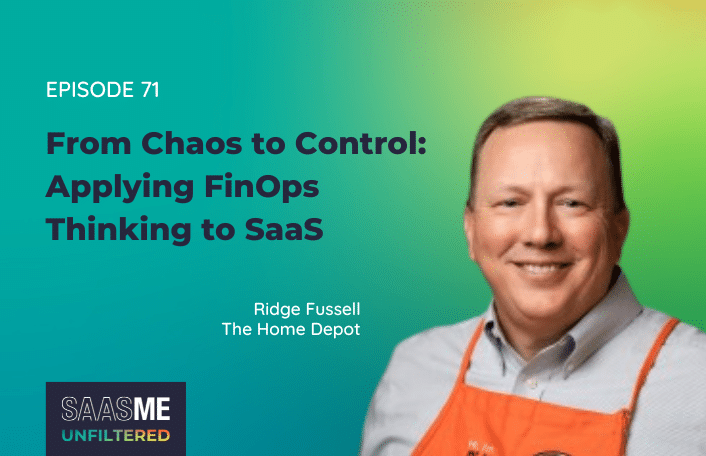
From Chaos to Control: Applying FinOps Thinking to SaaS
Table of Contents ToggleWhat Is a SaaS Renewal?Goals of a SaaS...
Back
Back
Search for Keywords...
Blog

Table of Contents
The shift to the cloud has created a massive shift in how businesses and their employees purchase, manage, and renew software assets. Ten years ago, business department leaders submitted requests to Procurement or IT for every software purchase. Today, any employee within an organization can purchase software-as-a-service (SaaS) with the click of a button.
However, the ease of purchase has created a problem with SaaS growth, as it creates a highly dynamic environment in the SaaS stack. Zylo’s SaaS Management Index found that the average organization has 275 SaaS applications, spending $49 million annually. In addition, seven new applications enter an organization’s SaaS portfolio each month, or about 92 per year. Without proper oversight, this leads to 33% annual portfolio growth.
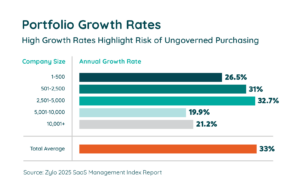
The more SaaS an organization acquires, whether individual employees or teams expense it, the harder it becomes to manage renewals. Today, the average company experiences 247 renewals every year, roughly one per business day.
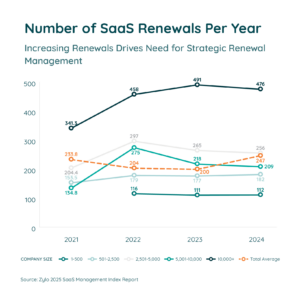
This is becoming a dilemma cutting into the bottom line of many organizations without proper SaaS management.
SaaS use is growing rapidly – and will continue to do so for the foreseeable future. Gartner forecasts that SaaS spending will grow 19% in 2025 to $299B – up from $247B in 2024. And that spending is increasingly decentralized.
Ownership of SaaS applications in recent years has shifted from IT to individuals and business units. That now accounts for more than two-thirds (74%) of SaaS spending, and 84% of the application quantity. For many organizations, this shift to decentralized SaaS makes sense when compared to on-premise software asset management. This is due to the fact that SaaS tools:
However, the prevalence of automatic renewal clauses in SaaS subscriptions makes charting a holistic renewal strategy a critical task.
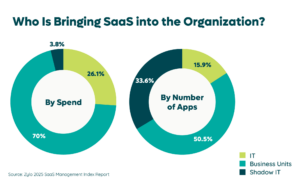
Regardless of company size or experience, the growing adoption of SaaS also challenges business leaders to find new ways to safeguard value, demonstrate ROI, and prevent risk with this large area of investment.
In this guide, you will learn how SaaS Renewal Management:
A SaaS renewal — also called a software renewal — is simple. It is whenever the end-user renews their subscription to a SaaS application for a set time. Still, the proliferation of SaaS applications means many of these renewals are occurring across an organization regularly. This is true whether they are manual or automatic.
A study of Zylo’s database of over $40B in SaaS spending has revealed that a large organization will, on average, undergo at least one SaaS application renewal every business day.
These renewals offer an opportunity for organizations to evaluate their spending and usage. Is the application used to its full potential? Do we still need this app? Knowing about renewals ahead of time allows for organizations to address questions like these, and decide how they can adjust for stronger growth and future needs.
However, this can be challenging due to the sheer number of known and unknown applications operating across an organization. That’s why your organization needs a strong SaaS renewal strategy.
Proactively managing your renewals is vital for holistic SaaS management. Rather than dealing with renewals only when they appear, a strong SaaS renewal strategy empowers organizations to cut SaaS costs and risks. This is essential for optimizing your SaaS investments.
An effective SaaS renewal strategy will:
Marigold Uses Zylo to Save on Sprawling SaaS Costs & Streamline M&A Technology Integration
Discover how Marigold unlocked the door to nearly $1M in SaaS cost savings with Zylo, while undergoing a M&A tech integration and cutting software waste from their portfolio.
Rather than dealing with renewals as they appear, we recommend that organizations prepare a 90-day window – or more for large, enterprise suites such as Microsoft or Salesforce. Planning allows you to never miss a renewal date, saving you from the risk of your contract locking in for another year.
This begins with full visibility of your SaaS assets. After all, how can you manage what you don’t know you have? This empowers you to identify ownership and usage across your organization and to strike a balance between IT, LOB, and individuals. From there, you’re prepared to optimize your utilization towards a recommended 90% rate.
Once you identify who is using what, you are then ready to rationalize and rightsize your SaaS portfolio.
This means understanding where you have redundancies in your stack. From there, companies can determine where they’re overpaying for seats for applications, or what applications are operating within the organization that serve the same purpose. Once you’ve accomplished this, you can consolidate or eliminate these applications the next time they are up for renewal, if not sooner.
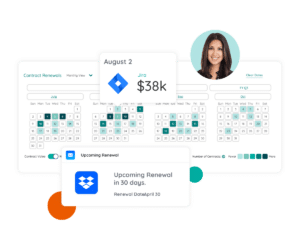 Visibility also gives you the power to create a SaaS renewal calendar. With these tools, companies can map and manage renewal timelines effectively and prepare for long-term success with a strong SaaS renewal strategy. By getting a clear view of renewal dates, an unexpected renewal will never surprise your organization again.
Visibility also gives you the power to create a SaaS renewal calendar. With these tools, companies can map and manage renewal timelines effectively and prepare for long-term success with a strong SaaS renewal strategy. By getting a clear view of renewal dates, an unexpected renewal will never surprise your organization again.
Even more important, businesses can comfortably review contract terms well ahead of renewal.
Of course, any good SaaS renewal strategy will require consistency. To prepare for this, use a SaaS renewal playbook to stay on top of your renewal calendar to systematically address renewals before, during, and after they occur.
For more help, this SaaS renewal checklist will guide you every step of the way.
The Ultimate Guide for Wildly Effective SaaS Renewals
Learn MoreWith the power to prepare for renewals comes the power to renegotiate your SaaS contracts. This enables organizations to work with their SaaS providers to create contracts that allow them to get the most out of their SaaS. The last thing you want to do is cave on price in negotiation – or on other contractual terms important to your business.
So, here are the best practices to negotiate your SaaS contracts.
Now that you know how to prepare for a renewal conversation, you can move on to what to bring to the table. These tactics will help you negotiate the SaaS fees and terms you need to get the most out of your software.
How Versapay Leverages Zylo’s Platform and Managed Services to Take Control of SaaS
Learn how Versapay’s IT team taps into the Zylo platform and a dedicated SaaS management resource to optimize its SaaS portfolio and drive cost and time savings.
Manage SaaS renewals with confidence and without surprises. Zylo’s Discovery Engine provides 100% visibility of your SaaS assets. This helps establish a system record that empowers you to use data-driven insights to stay on top of renewals at a massive scale, prepare for renewals in hours and gain negotiation power by knowing your numbers.
What’s more, it provides a contract concierge service to help wrangle contracts and put them to work for you.
But that’s not all Zylo helps with.
 Zylo’s Renewal Calendar offers a unified, organized view of all upcoming renewals, providing clarity and structure to a renewal process that so often takes Procurement and SAM leaders unaware.
Zylo’s Renewal Calendar offers a unified, organized view of all upcoming renewals, providing clarity and structure to a renewal process that so often takes Procurement and SAM leaders unaware.
In addition to being more proactive, it enables you to give each renewal the attention it deserves. This ensures ample lead time to make a financial impact and helps you avoid unexpected busy periods.
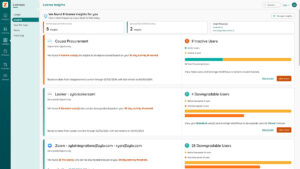 Zylo Insights provides personalized, prioritized, and actionable recommendations for quick wins to drive rightsizing and savings initiatives.
Zylo Insights provides personalized, prioritized, and actionable recommendations for quick wins to drive rightsizing and savings initiatives.
In a holistic, single-view approach, you can see all your optimization recommendations prioritized by the greatest return. What’s more, this empowers you to rationalize your SaaS stack while Zylo’s renewal alerts provide you advance notice to manage renewals.
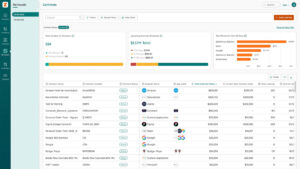
Zylo helps you manage your SaaS contracts, so you’ll never find yourself hunting for missing contracts again. Our service empowers users to track payment activity, load contract details, and save all of your contract documents into a single, at-a-glance reference.
Even if your portfolio includes thousands of applications, you will know what is up for renewal and what you can do about it.
Our data finds that organizations on average overspend on applications by 15%. That’s why we offer Zylo benchmarks. Zylo surfaces license, subscription, and payment data across your portfolio. Then it benchmarks that against the market. Using anonymized data from the sector’s largest customer base, you will find the right products at the right price.
Knowing the numbers is the first step to negotiation power.

Zylo’s SaaS Negotiator Service acts as an extension of your own team while using your company email address to create a seamless experience across your business.
As an example, our team and services have helped businesses like Talkdesk make incredible improvements. After 10 years of growth, the company found that its SaaS portfolio had grown decentralized and lost visibility. This left them with little insight into what SaaS was purchased, what it was costing them, or even who made the purchases. In a few short months, Zylo helped them establish improved collaboration and effective SaaS management.
Working with us, Talkdesk achieved:
Schedule a demo with us today and see how we can help your organization manage your SaaS assets, and achieve better ROI.

Table of Contents ToggleWhat Is a SaaS Renewal?Goals of a SaaS...
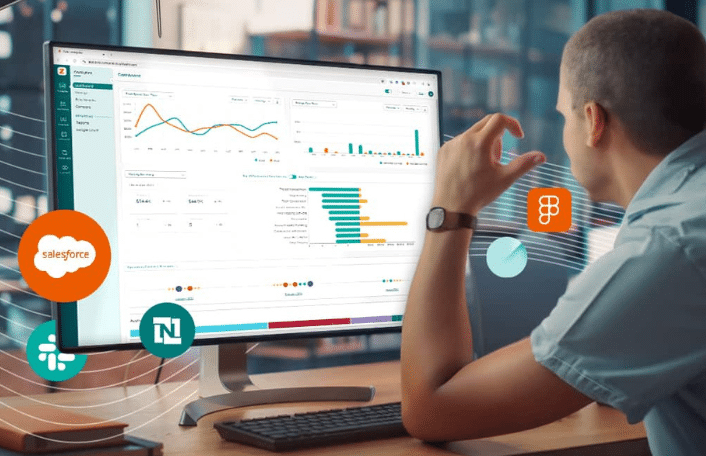
Table of Contents ToggleWhy Data Integrity Breaks DownWhat Does Data Integrity...
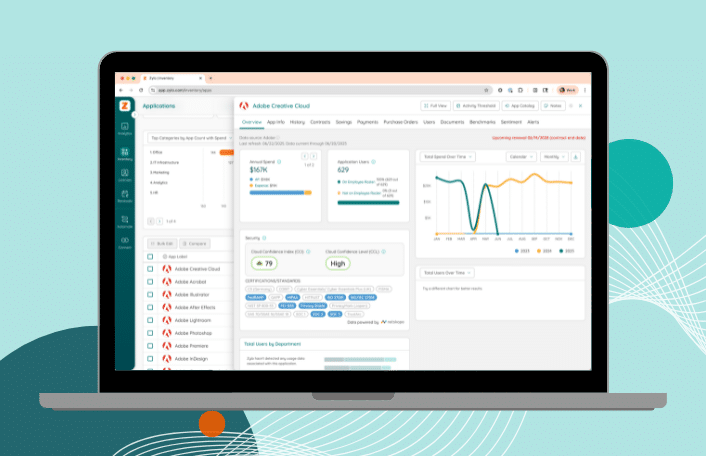
Table of Contents ToggleWhat Is a SaaS Renewal?Goals of a SaaS...

Table of Contents ToggleShelfware DefinedWhy Shelfware HappensPoor Organizational OversightShadow IT and...
| Cookie | Duration | Description |
|---|---|---|
| cookielawinfo-checkbox-analytics | 11 months | This cookie is set by GDPR Cookie Consent plugin. The cookie is used to store the user consent for the cookies in the category "Analytics". |
| cookielawinfo-checkbox-functional | 11 months | The cookie is set by GDPR cookie consent to record the user consent for the cookies in the category "Functional". |
| cookielawinfo-checkbox-necessary | 11 months | This cookie is set by GDPR Cookie Consent plugin. The cookies is used to store the user consent for the cookies in the category "Necessary". |
| cookielawinfo-checkbox-others | 11 months | This cookie is set by GDPR Cookie Consent plugin. The cookie is used to store the user consent for the cookies in the category "Other. |
| cookielawinfo-checkbox-performance | 11 months | This cookie is set by GDPR Cookie Consent plugin. The cookie is used to store the user consent for the cookies in the category "Performance". |
| viewed_cookie_policy | 11 months | The cookie is set by the GDPR Cookie Consent plugin and is used to store whether or not user has consented to the use of cookies. It does not store any personal data. |
